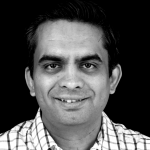The over-the-top (OTT) and video-on-demand (VOD) market in Asia Pacific will be $42bn in revenue from 351mn subscribers by 2023, predicts Research and Markets. This market will be served by the 50+ large and small players currently in the fray, and perhaps more to come.
With the market getting crowded, audiences around the world are going to be spoilt for choice. But, for the platforms, it will get progressively more difficult to attract and retain their viewers.
Capturing—and keeping—eyeballs
So what can OTT players do to succeed in such a market? Digital media strategist and business transformation advisor Howard Homonoff summarizes it beautifully in Forbes: “To succeed in this brave new video world, you need an alchemy of attractive content, an appealing user experience, the opportunity for personalization, an integration of data and technology, and some early credibility in the existing business ecosystem.”
At the heart of all of these, however, is the viewer.
The deeper your understanding of the viewers—their likes, dislikes and preferences, values, routine and habits—the better your ability to tailor the viewing experience to their needs. For instance, someone may be willing to pay a premium to avoid ads but another may not. Crucial decisions related to formats and pricing must also stem from this intricate understanding of the viewers: how do they evaluate the value of the content you are providing, given how much time they spend watching it and their response to what they watch? How much are they willing to pay for a supposed value addition? Should there be more ads or fewer for someone?
Data will help you answer all of these questions.
Data at the heart
Netflix’s recommendation engine and personalized feeds are much-touted examples of how an OTT player can use data effectively. But suggesting the right content is just one part of it. There are more ways in which data analytics can help you as an OTT player.
- Understanding your users: What is the next best offer for the audience? What is the next best action they could do? What do they abandon? Knowing this will help you retain your users and reduce churn.
- Improving the lifetime value of each user: What will let you nudge them up the revenue chain? Are there any cross-selling opportunities?
- Enhancing user experience: What personalized recommendations can you make for users? How are they engaging with the platform? What will keep them coming back?
- Targeting ads based on user preferences: How much is too much? How can the ads be personalized? What ads work best for a target viewer?
- Making accurate predictions for the next best offers or actions: This could fuel cross-sell/up-sell opportunities and improve user experience.
In fact, Netflix took things a step ahead in 2013 and moved from predictive to proactive—they spent US$100mn on producing House of Cards, because their data (based on the success of the original BBC miniseries, audience preferences for the genre, fan bases of director David Fincher and actor Kevin Spacey, etc.) correctly predicted its success!
Subscriber insights for success
One of our clients is a leading media production and broadcasting company with a user base of over 1mn on their Video On Demand (VOD) platform. They deliver entertainment and sports content in dozens of regional languages over the web, mobile (iOS and Android) and TV apps like FireTV. As part of their digital strategy, they wanted to optimise user experience across channels based on user behaviour and preferences. This required a deeper understanding of customer behavioural patterns across platforms.
We took a collaborative and systematic approach to understanding their requirements in terms of data sources, models, volumes, velocity and variety. Using these inputs, we designed and architected an enterprise data lake and pipeline for business intelligence. The BI reports we ran for them captured insights around users (new vs old, viewing by genre, channel, and show, payment modes), content (most consumed per user, triggers for moving from free to paid) and subscription (reasons for cancellation, subscription ageing, etc.) This has given them a unified, yet nuanced view of their audience and formed the foundation for their VOD customer understanding.
Case Study: Enterprise data lake on cloud
1CloudHub helped India’s leading television entertainment network bring its scattered big data into a single source of truth, to make advanced analytics affordable.
Getting ahead in the game
As an OTT player, you are already sitting on a treasure pile of data about your users. Take, for instance, Livestream’s 2018 report on OTT trends. It has unearthed a wealth of insights based on the viewing behaviour of 3.6Mn Vimeo subscribers, from the significance of OTT free trials and apps for viewing (even for users who sign up on web) to tailoring the length of the content based on the viewing platform.
Harvard professor Gary King famously said, “Big Data is not about the data —it is about the analytics.” That is, the process of gleaning useful, actionable insights from the tremendous volume of data getting collected. If you are contemplating how you can get the most out of your data, get in touch with our consultants today and we will help you craft the right approach.



